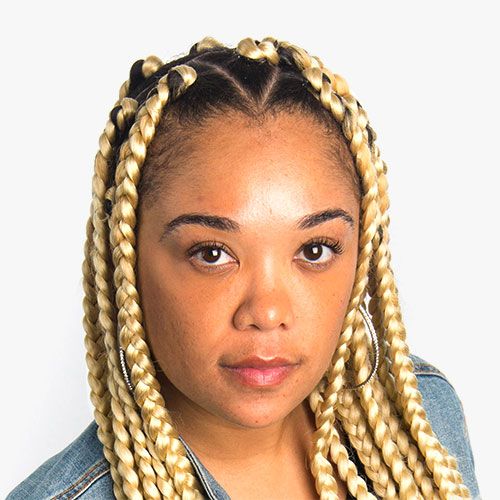Clustered in northern Suffolk County, more than an hour’s commute by train to Manhattan, Huntington and its adjoining communities have long epitomized Long Island’s suburban lifestyle. There’s a vibrant downtown. There are stately homes on wide leafy streets. There are former beach cottages close to Long Island Sound.
And there is change: The white population has dropped in many census tracts, and the Hispanic population has risen – a phenomenon reflected in house choices by real estate agents in Newsday’s investigation of residential sales practices.
The area emerged as the location most favored by agents for Hispanic house hunters on Long Island. In undercover testing that paired white and Hispanic buyers, agents recommended the Huntington surroundings far more often to the Hispanic testers – even though none asked specifically to live in that area.
In five tests, white and Hispanic house hunters sought $450,000 to $500,000 houses within 20 or 30 minutes of Greenlawn or Northport, two communities within driving distances from downtown Huntington, or a $600,000 house within 30 minutes of Syosset, an area also encompassing Huntington.
Collectively, the agents gave the testers 453 listings, recommending 65 percent of them to the Hispanic house hunters. The listings covered a swath of territory that extended from Plainview and Oyster Bay on the west to Hauppauge and Kings Park on the east.
Among those listings, the agents suggested homes in the core Huntington communities of Huntington, Huntington Station and South Huntington 173 times. Here the concentration of houses recommended to Hispanic buyers hit 84 percent – with no agent providing a majority of listings to a white tester.
The gap in the number of home recommendations made to Hispanic and white buyers in three of the tests was large enough that Newsday’s two fair housing consultants detected evidence suggesting that agents had steered Hispanic buyers into the Huntington area compared with matched white buyers.
These three agents recommended houses in the Huntington area 78 times to Hispanic house hunters and three times to their white counterparts – an imbalance of 96 percent for the Hispanic testers and 4 percent to the white testers.
In contrast, where agents chose Huntington as a place to live in six similar black-white tests, they recommended it to the black buyer 39 percent of the time.
An additional agent, Raj Sanghvi of Century 21, saw Huntington as a no-go zone when white and Asian testers separately sought his help finding $500,000 homes within 30 minutes of Northport.
Based on its ethnic makeup, Sanghvi advised white tester Gabriel Kennedy against considering the community.
“But you don’t want to go there. It’s a mixed neighborhood,” Sanghvi told Kennedy after speaking favorably about the Huntington school district.
When Kennedy asked what Sanghvi meant by “mixed neighborhood,” the agent said he was speaking “residents-wise.”
“You have commercial, you have residential, you have white, you have black, you have Latino, you have Indians, you have Chinese, you have Koreans; everything,” he explained, adding:
“It’s a mini, mini United Nations.”
Sanghvi offered no similar advice to an Asian tester matched with Kennedy. He recommended Huntington to neither man.
Sanghvi did not respond to a letter or email and telephone calls requesting comment.
“If I was a Huntington home owner or public official, the data from your investigation would give me serious pause and I would want to know more about how agents are marketing my community and whether they are affording all populations equal access to home ownership opportunities,” said Fred Freiberg, executive director of the Fair Housing Justice Center, who served as a paid Newsday consultant in designing the investigation and training testers. He was not paid to evaluate test results.
Robert Schwemm served as the second Newsday fair housing consultant and was not paid. Newsday counted tests as suggesting evidence of fair housing violations only when both Schwemm and Freiberg independently stated such an opinion based on information provided by Newsday.
Referring only to the tests that suggested evidence of steering, Schwemm concluded:
“Taken as a group, the three Hispanic-white tests with listings in the Huntington area show a meaningful, even stark, pattern of Hispanic steering to Huntington-area towns (and white and perhaps others) being steered away.”
Huntington, Huntington Station and South Huntington seamlessly connect but possess distinct characteristics.
Downtown Huntington is alive with restaurants, bars and a concert venue, The Paramount, that in 2018 was ranked the fifth best club concert venue in the world by a trade magazine.
The community has an independent movie theater and bookstore. A historical marker memorializes a tavern where George Washington stopped to thank Revolutionary-era patriots. The area is often referred to as a village, although it is not legally designated as such.
The population breaks down 86 percent white, 9 percent Hispanic, 1 percent black and 3 percent Asian.
Route 25A, known as Main Street, is replete with hometown touches such as a toy store and artisanal ice cream and chocolate shops. The road has served as a dividing line in Huntington between north and south, wealth and working class.
To live north of this east-west thoroughfare means to enjoy proximity to Long Island Sound, where a picturesque harbor is filled with boats during the summer and hosts a holiday boat parade in December.
Waterfront residential communities are mixed with neighborhoods filled with stately homes. The area boasts private yachting clubs and the Huntington Country Club.
Just east from downtown, neighborhoods run the gamut from small former beach cottages to neighborhoods with large properties on wide, leafy streets. The members-only Huntington Crescent Club is nestled among the streets. Private beaches related to homeowner associations add an air of exclusivity for those who make their homes north of Route 25A.
Huntington Station is to the south. There is a Long Island Rail Road stop, as well as the birthplace of poet Walt Whitman. A shopping mall bears his name and features such high-end shops as Saks Fifth Avenue.
The community has long been the center of the area’s working class and minorities and has a growing Hispanic presence.
In 1980 the white population was 88 percent. By 2017 the number had dropped to 48 percent, while the Hispanic proportion of residents rose from 5 percent to 38 percent.
Longtime residents trace a decline in Huntington Station to 1966, when a never-completed, so-called urban renewal program demolished a grocery store, bank, movie theater and other indicators of a robust downtown. Eventually the area saw construction of some low-income and affordable housing but few commercial services.
In 1998, officials approved a site where day laborers could gather for hire, an idea many residents opposed. It was eventually closed. Because of rising crime, Suffolk County police posted surveillance cameras on some Huntington Station streets in 2008. Still, partly propelled by gang activity, crime rose.
From 2008 to June 2010, the community recorded 311 violent crimes, a number proportionally higher than in the surrounding neighborhoods. From 2011 through 2012, overall crime climbed 11.2 percent, while police arrested dozens of alleged gang members.
Against that backdrop, parents who lived north of Route 25A objected to having their children attend the Jack Abrams School, located in Huntington Station close to two public housing complexes.
After a shooting near the school parking lot in the summer of 2010, the school board voted to close the school for instruction but maintained after-school activities and a summer camp for children of low-income families. Eventually, the board gave parents the option of registering children in a magnet school there from fourth through sixth grade.
Still, over a 12-month period beginning in 2013 there were four murders in Huntington Station, including that of Maggie Rosales, 18, who was killed by her neighbor.
In September 2017, Gov. Andrew M. Cuomo said he would deploy state troopers to 10 of the “highest risk” schools in Suffolk County to stop gangs from recruiting. Huntington High School was on the list, upsetting many in the community.
South and west of Huntington Station is South Huntington, a community that shares its ZIP code with Huntington Station but identifies differently with its own school and library districts. Its demographics are different as well: 81 percent white, 10 percent Hispanic, 2 percent black, 7 percent Asian.
South Huntington has a mix of home styles and residential communities as well as the heavily commercial Jericho Turnpike running through from east to west. There is often confusion on where South Huntington begins and where Huntington Station ends.
Willie Perez is treasurer at Huntington Station’s Iglesia Luz de Salvacion, the oldest Spanish language church in Huntington. The congregation has expanded to need a second location.
“The Hispanic community is growing beyond Huntington Station,” he said.
Julio Hernandez, a real estate agent with an office in the heart of Huntington Station, said he has seen the beginning of the town’s transformation on his own Huntington street. When he moved to his block of 14 houses in 2001, his was the first Hispanic family, he said. Now there are five, including his next-door neighbor, to whom he helped sell the house.
“We don’t want to go where we’re not welcome,” he said. “Here you have a good, thriving Hispanic community with a sense of community and the chance to be close to relatives.”
Hispanics’ movement into more expensive parts of town confirms their growing economic power, he said. “We look for nice neighborhoods, good schools and to be good neighbors,” he said. “We’re like everyone else.”
The agents in the five tests that matched Hispanic and white testers recommended houses in 18 Huntington census tracts, covering Huntington, Huntington Station, South Huntington and Halesite.
They placed their selections for both customers in areas that averaged 72 percent white, choosing listings that would spread the Hispanic population beyond Huntington Station. At the same time, when agents selected Huntington Station they offered listings there almost exclusively to Hispanic buyers.
Following are three case histories that show evidence of the disparate treatment hidden in house hunting in in the area around Huntington. They are accompanied by the findings of fair housing consultants Freiberg and Schwemm.
The opinions of Freiberg and Schwemm are based on data provided by Newsday. Their judgments are not legal conclusions.
The case histories each include the experts’ findings, and responses of agents and the companies they represent.

Hispanic tester
Received 58 listings in Huntington
White tester
Received no Huntington listingsConsider the home choices offered by Signature Premier Properties agent Ann Pizaro when white and Hispanic testers sought $600,000 homes within 30 minutes of Syosset, where Pizaro was based.
The agent suggested 18 listings to white tester Kimberly Larkin-Battista, all of them in nearby Plainview and Syosset. For Hispanic tester Nana Ponceleon, Pizaro chose seven listings in those communities plus 58 listings that were seven miles away in the Huntington census tracts.
Of the homes she chose for Ponceleon in Huntington, 14 were north of Route 25A, an area that traditionally is overwhelmingly white but is changing. Her home selections were in census tracts where the white population has decreased 8 percentage points to 85 percent from 2000 to 2017, according to the U.S. Census Bureau.
Experts’ Opinions
Freiberg: A high percentage of listings given to the Hispanic tester were in Huntington. Even though on average the areas where home listings were provided were areas with a comparable percentage of “white” population, the school district in Huntington has a much larger Hispanic student population. This makes the agent’s conduct more suspect of steering.
Schwemm:The test shows strong evidence of the Hispanic tester being steered to the three Huntington area towns with the Hispanic tester receiving many more listings there (57-0) than the white tester.
Taken as a group, the five Hispanic-white tests with listings in the Huntington area show a meaningful, even stark, pattern of Hispanic steering to (and white and perhaps others) being steered away from the Huntington-area towns.
Agent and Company Responses
Pizaro did not respond to a letter notifying her of Newsday’s findings.
The letter and a follow-up email invited her to view video recordings of her meetings with testers and requested an interview. She did not respond or return a phone message.
Kathleen Viard, listed as a co-owner of Signature Premier Properties, viewed Pizaro’s videos at Newsday with two branch managers, brokers Richard Halloran and Claire Leface. They declined to comment.

Hispanic tester
Received 12 listings in Huntington
White tester
Received one Huntington listingIn another paired test, Ashley Creary, using the name Eve Lopez, asked Century 21 agent Meghan Tello in June 2016 for help looking for a house of up to $500,000 within 30 minutes of her husband’s job in Greenlawn.
Creary said she was a child counselor at a school in Queens but that the commute wouldn’t bother her. Tello gave Creary 29 listings, 12 of which were in Huntington.
Three of those homes were north of Route 25A.
Less than a month later, white tester Lizzy Lee visited Tello, also seeking a $500,000 house within 30 minutes of Greenlawn, where she said her mother was in a nursing home near the Huntington Station border. Tello gave Lee 34 listings; one was in Huntington, and two were in South Huntington.
Even though the white tester mentioned a nursing home that’s on the far west side of Greenlawn, Tello placed most of her listings further to the east in Greenlawn (66 percent white), Northport (93 percent white) and Commack (88 percent white).
The Hispanic tester mentioned that her husband worked for a company in the center of Greenlawn, yet she received a dozen listings in Huntington to the west. Outside Huntington, the pattern of listings provided to the white and Hispanic testers was similar.
Experts’ Opinions
Freiberg: A high percentage of listings given to the Hispanic tester were in Huntington. Even though on average the areas where home listings were provided to the Hispanic tester were areas with a comparable percentage of “white” population, the school district in Huntington has a much larger Hispanic student population, suggesting possible steering based on national origin.
Schwemm: The test shows strong evidence of the Hispanic tester being steered to the three Huntington area towns with the Hispanic tester receiving many more listings there (12-3) than the white tester.
Taken as a group, the five Hispanic-white tests with listings in the Huntington area show a meaningful, even stark, pattern of Hispanic steering to (and white and perhaps others) being steered away from the Huntington-area towns.
Agent and Company Responses
Tello did not respond to a letter notifying her of Newsday’s findings. The letter and a follow-up email invited her to view video recordings of her meetings with testers and requested an interview. She did not respond or return a phone message.
Newsday presented the test findings to Century 21 Real Estate LLC president and chief executive officer Michael Miedler by letter. He did not respond to the letter or a follow-up telephone call.

Hispanic tester
Received nine listings in Huntington
White tester
Received no Huntington listingsIn a third case, Douglas Elliman Realtor Michele Friedman sent a Hispanic tester nine listings in Huntington, including three north of Route 25A, but sent no Huntington listings to a white tester with matching search terms: a home for $475,000 within 20 minutes of Northport.
White tester Steven Makropoulos visited Friedman in April 2017. He said his mother-in-law lived in the Dawn Hill Manor residential care facility in Northport, approximately five miles east of Huntington.
He advised Friedman that his wife worked in Downtown Brooklyn and would likely take the train to work. He said he was a bathroom installer headquartered in New York City but that he was looking to join a company on Long Island.
Friedman recommended Northport, East Northport and Centerport, all east of Huntington. She also asked whether Makropoulos would consider Kings Park, about 10 miles east of Huntington. He said he would be open to it.
Friedman gave Makropoulos 40 listings, starting in Centerport on Huntington’s eastern border and heading farther east as far as Kings Park.
She never mentioned Huntington as a place to live Makropoulos. None of her suggested listings was in Huntington
Hispanic tester Jesus Rivera, using the name Jose Montes, met Friedman less than three weeks later looking for a $475,000 home within 20 minutes of his wife’s job at the Northport VA Medical Center, located about seven miles east of Huntington.
Rivera said he worked in Manhattan but wasn’t concerned about his own commute. Referring to his wife, he told Friedman: “I want to make her commute easier. Like for my job, it’s much more flexible. I can come in like certain days of the week to work at the lab.”
Friedman gave Rivera 28 listings, nine of which were in Huntington and the rest to the east, but none as far east as Kings Park. She mentioned the name of Huntington 11 times in their conversation.
Experts’ Opinions
Freiberg: A high percentage of listings given to the Hispanic tester were in Huntington. Even though on average the areas where home listings were provided were areas with a comparable percentage of “white” population, the school district in Huntington has a much larger Hispanic student population. This makes the agent’s conduct more suspect of steering.
Schwemm: The test shows strong evidence of the Hispanic tester being steered to the three Huntington area towns with the Hispanic tester receiving many more listings there (9-0) than the white tester.
Taken as a group, the five Hispanic-white tests with listings in the Huntington area show a meaningful, even stark, pattern of Hispanic steering to (and white and perhaps others) being steered away from the Huntington-area towns.
Agent and Company Responses
A lawyer for Douglas Elliman asserted that the Hispanic tester’s comments led to the placement of the listings.
“Although the Hispanic tester initially told Ms. Friedman that he wanted to move within 20 minutes of Northport to ease his wife’s commute … he later stated that he wanted to move within 20 minutes of Huntington,” wrote Jessica T. Rosenberg of Kasowitz, Benson, Torres LLC. “Ms. Friedman asked: ‘so you want to be within ( ) Huntington?’ The tester responded, ‘Yes.’
In her presentation of that question, Rosenberg omitted the word “the” from “within the Huntington,” a phrase spoken by Friedman as she circled her hands, suggesting the Huntington area rather than Huntington specifically. The agent followed up by saying:
“Yeah, so you’d be looking at, obviously Northport, East Northport, Centerport, Greenlawn, Huntington.”
Referring to Friedman, Rosenberg also wrote, “She then wondered whether the tester would be willing to look east of Huntington and realized he would not because he would still be commuting to the city for his fictional job in Manhattan at NYU Langone. She noted that he confirmed, ‘Yeah, I still have to go to the city.’
Here, Rosenberg omitted that the white tester had said his wife would commute to Brooklyn on the Long Island Rail Road, a commute that Friedman would have lengthened by suggesting homes east of Huntington in Kings Park.
She also omitted that the Hispanic tester had told Friedman, “I don’t really mind the commute for me, you know, because my first class isn’t until 10 in the morning.”
Sources: Demographic data in maps from Census Bureau 2016 American Community Survey five-year estimates.
